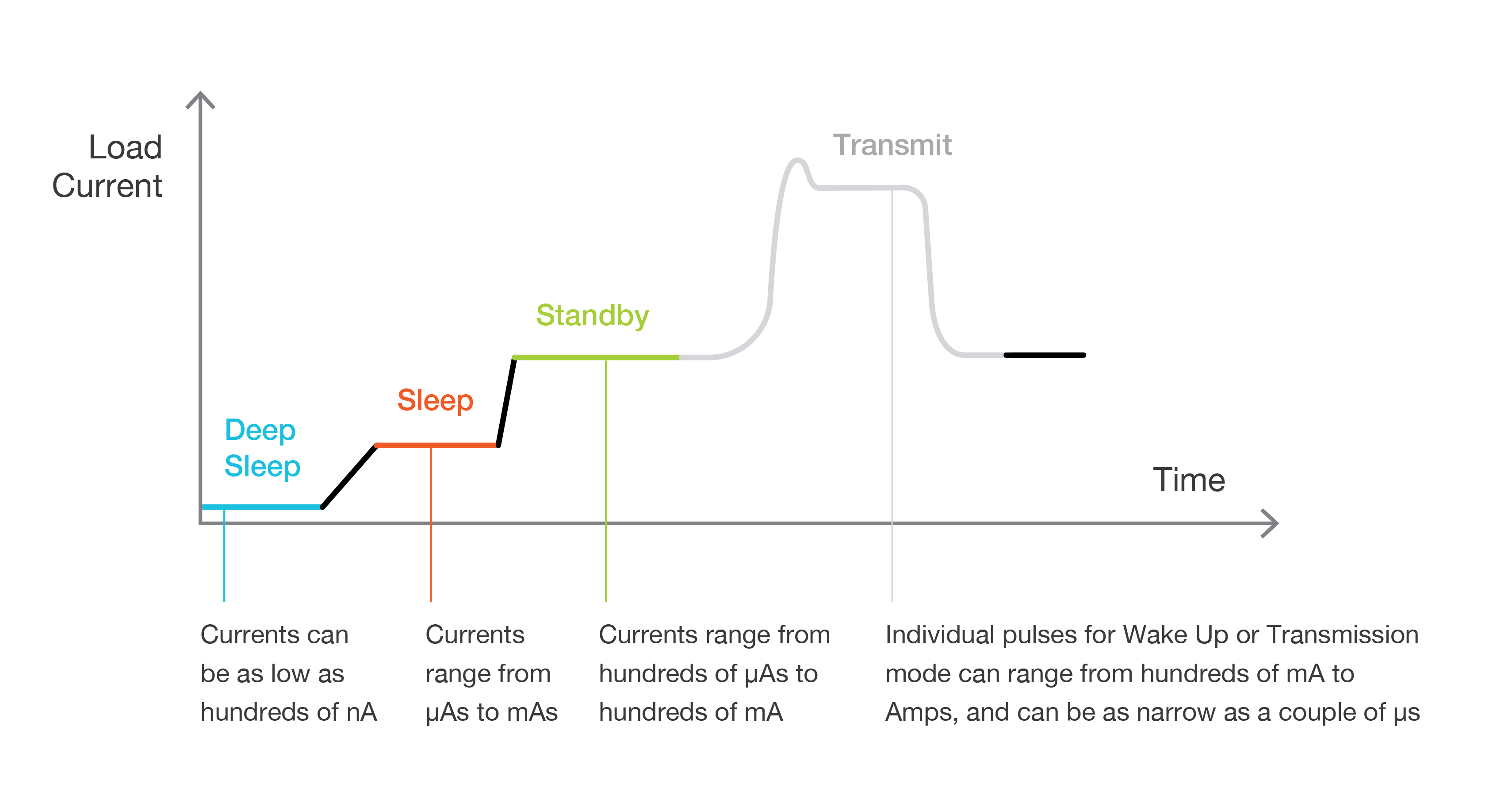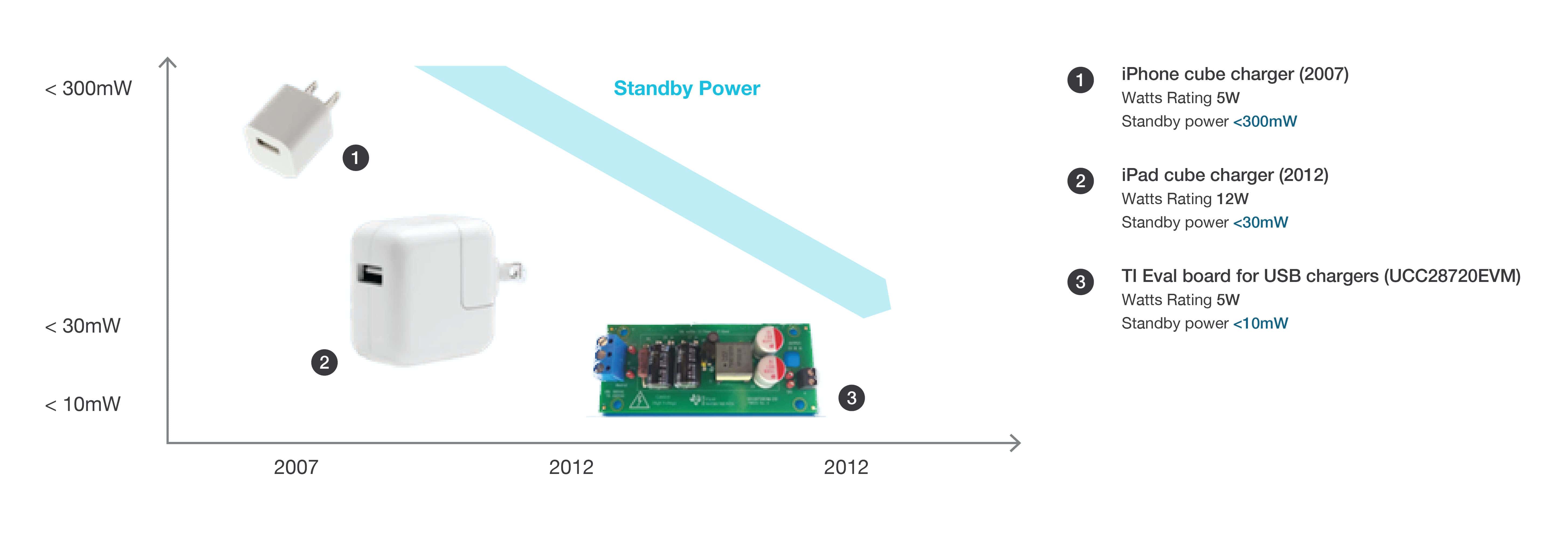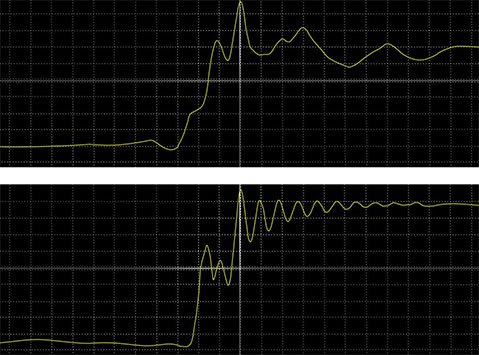Power Efficiency Trends
Power Efficiency Trends
Contact us
Call us at
Available 6:00 AM – 5:00 PM (PST) Business Days
Download
Download Manuals, Datasheets, Software and more:
Feedback
Power Efficiency Trends

Power Efficiency
Things that are Always On
Power electronics cover a lot of territory, from nanowatts to kilowatts. But designs at all power levels share a common goal, namely to improve efficiency. In this article, Tektronix engineers share their views on emerging trends in power design.
Mobile devices are top-of-mind when it comes to battery-operated efficiency. We expect at least 8 hours of talk time on a phone, and we expect it in a compact, capable package. The November 2017 Ericsson Mobility Report indicates that there are currently over 5 billion mobile broadband subscriptions.
While smartphones will no doubt continue to drive power management and battery technologies, a new class of connected devices is testing the limits of power management. It’s predicted that by 2020, there will be 24 billion IoT devices connected through wireless technology.
Combining a 2281S-20-6 with a DMM7510 provides a complete solution for power consumption/battery life assessment
Many of these devices will not have access to the power grid, and all of them will need to be constantly on, at least to some extent. It’s this continuous, always-on aspect of the IoT that demands new solutions to power management and measurement. “If you’re designing an IoT device that is being hung up on an oil rig, there’s no line power and it’s probably going to be battery operated,” says Tektronix engineer Jay Shah. “Power consumption considerations for all those IoT devices are very critical.

“ Obviously, determining the power consumption of these devices is absolutely critical, but the huge operating range of IoT sensors makes characterizing the power profile very challenging,” Shah explains.
The International Standards Race
In response to climate change, many governments are developing new, stricter efficiency standards. Unfortunately, the frenetic pace at which these standards are being released, and the number of parties involved, are enough to make even the most experienced designers a little bit dizzy. Take, for example, the efficiency standards for external power supplies (EPS), also known affectionately as “wall warts” or “bricks”.

And the standards race is not just limited to external power supplies. New or revised standards are constantly being released for appliances, industrial equipment, and HVAC equipment as well. The standards are coming from many different agencies, each with their own jurisdiction. In addition to US and EU agencies, the China CQC has been active in developing standards. The California Energy Commission takes a proactive stance on energy standards that may exceed those of the US DOE. Each of these standards are living documents, so designers must stay up to date.
Automotive Electrification
Another trend shaping the requirements of power electronics is occurring in the automotive market. Many in the automotive industry predict that electric vehicles will ultimately replace internal combustion powered cars. DC-AC converters and battery management systems are critical to the traction systems in these vehicles, but there are a couple of not-so-obvious trends here as well.
The pervasion of electronics throughout modern cars compels designers to closely manage power consumption. The “always on” conundrum of the IoT also exists in automotive modules. Even when a car is turned off, many systems continue to operate in sleep mode. (In fact, many would argue that a car is among the most complex “Internet things” there is!) Even in internal combustion automobiles, designers are pressured to provide new levels of safety and comfort without draining the battery.
On the road to fully-electric vehicles, we will likely encounter various forms of hybrids. These vehicles will incorporate complex power conversion and management systems. In contrast to the soon-to-be-legacy 12-volt system, tomorrow’s HEVs and EVs will incorporate multiple power buses. Some may require bi-directional DC-DC conversion as power flows from starter/generators, regenerative brakes, batteries, or even solar cells.
The Big Switch to SiC and GaN
Power electronics will evolve in the next five years at a fundamental level, as wide bandgap semiconductor technologies come into broader use. New semiconductor materials such as silicon carbide (SiC) and gallium nitride (GaN), offer better thermal conductivity, higher switching speeds, and physically smaller devices than silicon. At the same time, this transition also requires engineers to revisit some of the design and testing techniques that they have traditionally used when creating power electronics.
This shift in the basic building blocks of power supplies is driving new designs from the ground, up. GaN is expected to change the world of electronics power supplies (< 100W or so). GaN technology is also shaking up the world of RF power amplifiers, thanks to many of the same attributes that make it well-suited for power conversion. SiC is finding applications in higher-power designs, such as motors, drives, and inverters.
The semiconductor industry is working to develop and promote these new wide bandgap power devices. Semiconductor R&D engineers are working to validate and characterize new components.Driver manufacturers are developing new gate drivers to withstand the demands of faster switching, EMI management, and more sophisticated topologies. Manufacturing engineers in these companies are dealing with wafer testing challenges – having to thoroughly test smaller devices over wider voltage and current ranges than ever before.

“And not just the device, the entire timing circuit as well,” adds Shah. “Because then you have to coordinate and juggle a lot of different signals at the same time to see that they are all making sense and they are not turning the device on when it’s not supposed to be turned on.”
Testing tools and techniques of old will simply not be sufficient for the changing trends of power design, according to Malap. “In traditional power converter design and testing, people would look at a couple of signals here and there and kind of guesstimate what others would be doing,” he explains. “Not so much anymore. It’s not just a bad idea, it’s a really bad idea because you might blow up the device.”
Surfing the Sixth Wave
The world is becoming more connected. As our technology changes to adapt to this fact, so too must our engineering tools and techniques. Without the ability to measure critical values and ensure the functionality of important devices, our progress can only go so far.
“All these challenges kind of land you back to how you optimize power consumption and general power processing,” says Malap, “which I think is pretty fascinating right now.”










